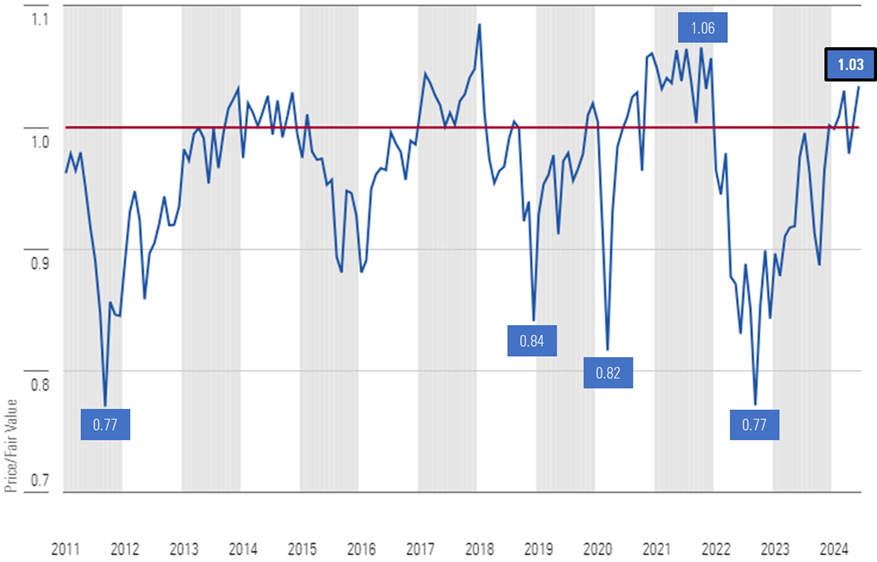Top 10 Suggestions For Evaluating Ai And Machine Learning Models Used By Ai Stock Predicting/Analyzing Trading Platforms
In order to obtain accurate, reliable and useful insights, you need to test the AI models and machine learning (ML). Models that have been poor-designed or exaggerated can result in inaccurate predictions as well as financial loss. Here are our top 10 tips on how to evaluate AI/ML-based platforms.
1. Learn about the purpose of the model and its approach
Determining the objective is important. Find out if the model was designed for long-term investing or for trading on a short-term basis.
Algorithm transparency - Examine to see if there are any information about the algorithm (e.g. decision trees neural nets, neural nets, reinforcement learning, etc.).
Customizability: Find out if the model can adapt to your particular trading strategy or tolerance for risk.
2. Review the model's performance using metrics
Accuracy - Examine the model's prediction accuracy. Don't base your decisions solely on this metric. It may be inaccurate regarding financial markets.
Recall and precision - Assess the ability of the model to detect genuine positives while minimizing false positives.
Risk-adjusted returns: Find out whether the model's predictions yield profitable trades after taking into account risks (e.g. Sharpe ratio, Sortino coefficient).
3. Make sure you test the model using Backtesting
Performance historical Test the model using historical data to determine how it will perform under previous market conditions.
Test the model on data that it hasn't been trained on. This will help to avoid overfitting.
Analysis of scenarios: Check the model's performance during different market conditions (e.g., bear markets, bull markets and high volatility).
4. Make sure you check for overfitting
Overfitting sign: Look for models that are overfitted. They are the models that do extremely well on training data and poor on data that is not observed.
Regularization: Check whether the platform employs regularization techniques, such as L1/L2 or dropouts in order to prevent overfitting.
Cross-validation. The platform must perform cross validation to test the generalizability of the model.
5. Assessment Feature Engineering
Relevant features: Verify that the model has important features (e.g. price volumes, technical indicators and volume).
Make sure to select features with care: The platform should only include statistically significant data and not redundant or irrelevant ones.
Dynamic feature updates: Check whether the model is able to adapt to changing market conditions or to new features as time passes.
6. Evaluate Model Explainability
Readability: Ensure the model is clear in its explanations of its predictions (e.g. SHAP values, importance of the features).
Black-box platforms: Be wary of platforms that utilize too complex models (e.g. neural networks that are deep) without explanation tools.
User-friendly insights: Ensure that the platform offers actionable insights which are presented in a manner that traders can comprehend.
7. Assessing the model Adaptability
Market changes. Verify whether the model can adapt to changing conditions on the market (e.g. an upcoming regulation, a shift in the economy or black swan event).
Be sure to check for continuous learning. The platform must update the model often with new information.
Feedback loops. Make sure you include user feedback or actual results into the model to improve it.
8. Check for Bias and Fairness
Data bias: Verify that the data on training are representative of the market, and free of bias (e.g. overrepresentation in certain times or in certain sectors).
Model bias: Find out if you are able to monitor and minimize biases that exist in the forecasts of the model.
Fairness. Be sure that your model doesn't unfairly favor certain industries, stocks or trading techniques.
9. Calculate Computational Efficient
Speed: See whether the model is able to make predictions in real-time, or at a low latency. This is crucial for traders with high frequency.
Scalability: Determine if the platform can handle massive datasets and many users without performance degradation.
Utilization of resources: Check to make sure your model is optimized for efficient computational resources (e.g. GPU/TPU use).
Review Transparency & Accountability
Model documentation: Make sure the platform has a detailed description of the model's design, structure, training process, and the limitations.
Third-party audits: Verify if the model has been independently audited or validated by third-party auditors.
Error handling: Examine to see if the platform incorporates mechanisms for detecting or rectifying model errors.
Bonus Tips
Case studies and user reviews Review feedback from users to get a better understanding of how the model performs in real world situations.
Trial period for free: Try the accuracy of the model and its predictability with a demo or free trial.
Support for customers: Ensure that the platform provides robust support for model or technical problems.
Check these points to evaluate AI and ML models for stock prediction to ensure that they are accurate and transparent, as well as compatible with trading goals. Have a look at the best a knockout post about ai stock trading bot free for more info including ai trading, ai for stock predictions, trading with ai, ai investing app, ai stock picker, ai investment app, ai for investing, ai stock trading app, ai trade, ai stock trading app and more.

Top 10 Ways To Evaluate The Latency And Speed Of Ai Platforms For Trading Stocks
When evaluating AI trading platforms which predict/analyze price movements the speed and latency of processing are crucial factors, especially for algorithmic traders and high-frequency traders. Milliseconds of delay could negatively impact profitability and trade execution. Here are the top 10 suggestions for assessing the latency and speed of these platforms.
1. Data feeds that are real-time: How can you analyze them
Data delivery time: The platform should provide real-time, accurate data within an extremely short time (e.g. with sub-millisecond delays).
Nearness of the data source: To decrease the time it takes to transmit data, check if your platform's servers can be found near exchanges that are major.
Data compression: Determine if the platform uses efficient data compression techniques to speed up the delivery of data.
2. Test Trade Execution Speed
Processing time for orders The time it takes for the platform to process and execute trades once you have submitted an order.
Direct market access (DMA). Be sure the exchange you're using offers DMA. DMA allows orders that are sent directly to exchanges to be processed without intermediaries.
Examine the execution reports to determine the timestamps on order confirmation fill, submission, and confirmation.
3. Check the Platform Receptivity
User interface (UI) Speed test the platform's response time to your inputs.
Chart updates - Make sure that the charts are updated in real-time and without any delay.
Mobile app performance When using a mobile app, ensure it performs as quickly as the desktop version.
4. Check for Low Latency Infrastructure
Server locations: Make sure that the platform is using low-latency servers in close proximity to major financial hubs or exchanges.
Check for co-location alternatives. These services allow you to host your algorithm close to the exchange.
High-speed networks: Check whether the platform is using fiber-optic networks that are high-speed or low-latency technologies.
5. Evaluation of Simulation and Backtesting Speed
Test the platform's capability to process and analyze historical data.
Simulation latency: Verify that the platform can simulate trading in real time without noticeable delays.
Parallel processing (or distributed computing) Learn what platforms use parallel or distributed processing to speed up complex calculations.
6. Measure API Latency
API response time: Measure how quickly the platform's API responds to requests (e.g. retrieving market data, placing an order).
Rate limits. Examine what limits are appropriate for the API. This can assist in avoiding delays in high-frequency transactions.
WebSocket: Check whether the platform is compatible with WebSocket protocols, which allow for streaming of data in real-time with low latency.
7. Test Platform Stability Under loads
High-volume trading: Play high-volume trading scenarios to assess if the platform remains steady and responsive.
Check your platform out during periods of market volatility.
Stress testing Check if the platform allows you to test your strategy in extreme circumstances.
8. Study the network and its connectivity
Internet speed demands. Check that your internet connection meets minimum speeds recommended for your platform to guarantee optimal performance.
Make sure there aren't any redundant connections.
VPN latency. Check if you're using VPN. Verify if you are using a VPN if this introduces latency.
9. Check for Speed Optimisation Features
Pre-trade analytics: Make sure that the platform has analytical tools for pre-trade to improve the route of your orders.
Smart Order Routing (SOR). Verify that the platform is using SOR in order to locate the most speedy and cost efficient execution venues.
Check the platform's tools to analyse and monitor latency in real-time.
Review User Feedback and Benchmarks
User feedback: Read user reviews to determine the performance of the platform with regard to the speed of its operation and latency.
Third-party benchmarks: Seek out independently-run benchmarks or reviews comparing the speed of the platform to other platforms.
Testimonials and case studies: Find out whether there are any case studies that demonstrate the platform's low-latency abilities.
Bonus Tips:
Trial period: Take a an unpaid test or demo of the platform to test the performance of the platform in real scenarios.
Customer Support: Make sure whether the platform provides assistance with issues related to latency, or optimize.
Hardware requirements. Make sure the platform is compatible with specific hardware for example, high-performance computers.
Use these guidelines to assess the speed and performance of AI platforms for predicting and analyzing stocks. Choose one that is suitable for your trading requirements and minimizes delays. A low latency is essential for traders who trade high-frequency, or algorithmically where even small delays can have a major impact on their performance. Follow the top rated click for source about ai tools for trading for blog examples including free ai tool for stock market india, best ai stocks, ai stock analysis, best ai stocks, trading ai tool, how to use ai for copyright trading, best ai penny stocks, best ai trading platform, free ai stock picker, ai stock trader and more.

Comments on “20 Great Info To Selecting AI Stock Trading Analysis Websites”